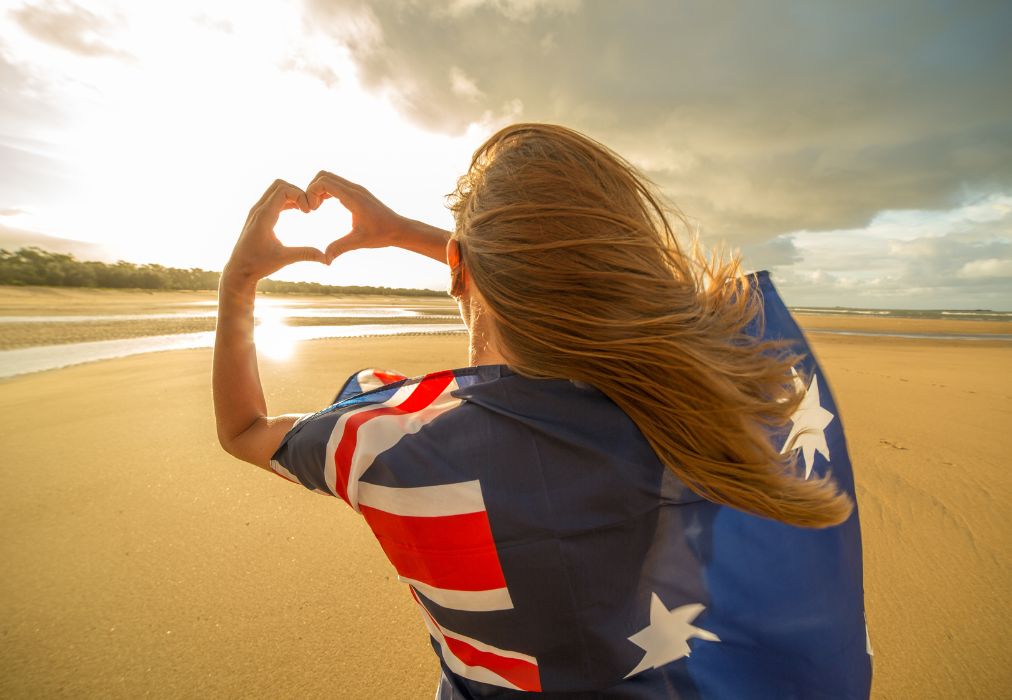Australia is one of solo female travelers’ bucket list destinations and a destination for one of our most fabulous small group trips. If you are planning a trip Down Under, you’ve come to the right place for travel tips and advice from a local.
In this article you will find a brief history of the country, tips for the best time to visit, travel essentials and entry requirements, health and safety advice, a list of the best places to see, and a fair dose of local culture, from Aussie slang to the best foods and drinks to try.
Lastly, channel Aussie culture with our reading list, movies and shows to watch.
Looking for what to pack? You can find our Australia packing list here.
Brief history of Australia
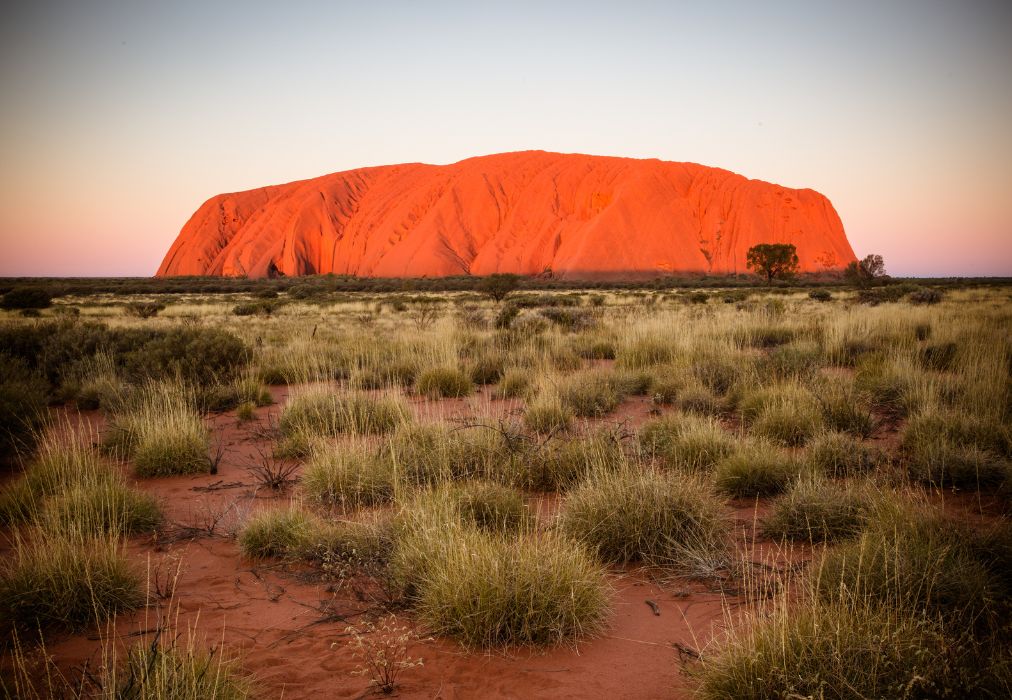
Before we get started, it’s useful and important to learn a bit more about this country’s history. If you’d rather go straight to the travel tips for Australia, click here.
Modern day Australia has been heavily influenced by its history. From ancient Indigenous cultures, to European exploration, British colonization, and a wave of 19th & 20th century immigration, Australia is a young country, still making sense of its history, and this history continues to shape daily Australian life.
Australia was part of the British Empire for over two centuries and remains a member of The Commonwealth of Nations, an association of 56 nations that were former British colonies.
But the British weren’t the first to inhabit the land, or even to plant a flag.
Dutch explorers were the first Europeans to chart the Australian coast, but for all European exploration, the continent was already home to its population of Indigenous Australians.
Australia’s Aboriginal people have been living on the land for at least 65,000 years, and their culture has been confirmed as the oldest continuous living culture in the world. They have passed on knowledge, tradition, ceremony, and culture through generations by storytelling, language, and performance, and their beliefs are shaped through the teachings of Elders, and through a deep connection to their spirituality and the land.
Aboriginal and Torres Strait Islander (First Nations) people are not one group, but rather hundreds of distinct cultural groups, with their own sets of languages, traditions, and cultural traditions. Well known tribes include the Yolngu of northeast Arnhem Land, the Arrernte of Central Australia, the Noongar of southwestern Australia, the Wiradjuri of central New South Wales, and the Torres Strait Islander peoples.
When European settlers arrived in Australia, they came with the intention of bringing convicts that were overcrowding the British prison system, and they stayed on the continent until Australia’s Federation in 1901.
This period of time is known as Australia’s colonisation, and it marked the beginning of a painful and complex period for Indigenous Australians. The abuse, atrocities, and cultural wars which occurred continue to have a fundamental impact on modern day inequalities, on racism, and cultural debates which continue in Australia today, around topics such as connection to Country and caring for Country, knowledge and beliefs, language, self-determination, family and kinship, and cultural expression.
The Australian Bureau of Statistics’ (ABS) estimates that 984,000 First Nations live in Australia today, representing 3.8% of the total Australian population.
In the 1850s, the discovery of gold in Australia sparked a massive population boom, and the then colonies saw huge economic growth. Waves of immigration from China, United States, Germany, and Poland flooded into Australia, and this pattern of open migration continued to be a crucial part of the country’s evolution through the 20th century.
Post war migration after World War II brought waves of Europeans, including Italians, Greeks, and Eastern Europeans, which has added layers of diversity to Australia’s social fabric since.
Significant migration from Asia, the Middle East, and Africa continues to enrich Australia’s identity as a multicultural nation, and the diverse history of the country now means you really cannot define an ‘Australian’ into one single box; the country is a tapestry of languages, cuisines, and tradition, and most Australians believe that this blend of historic influences has contributed to a stronger and more prosperous nation.
Quick facts about Australia
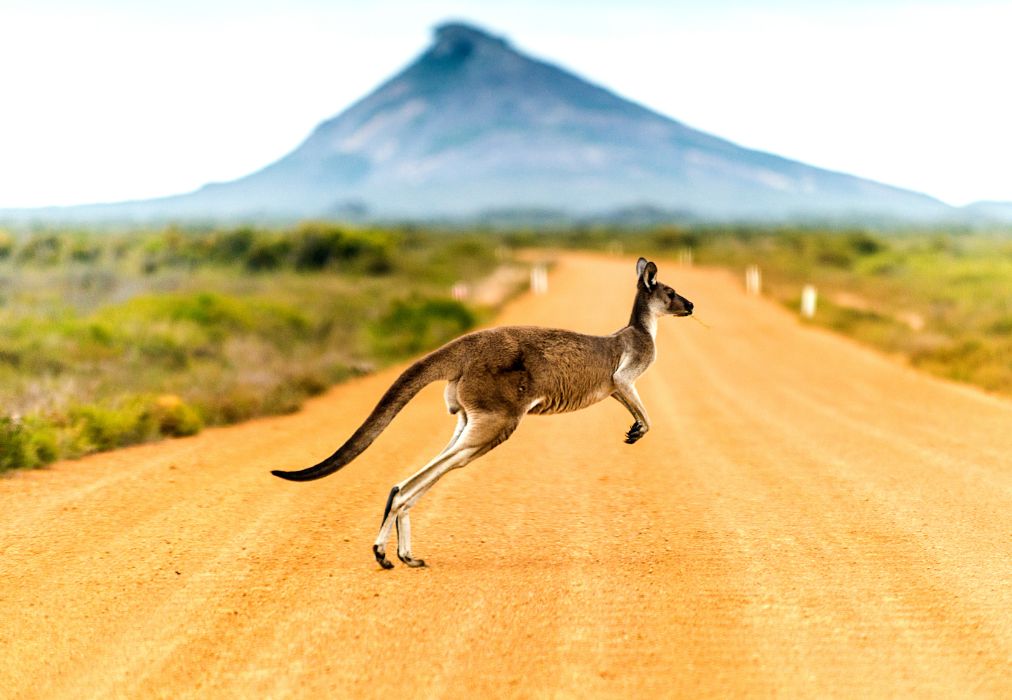
Australia is a very unique destination and because of that, you’ll find many quirks and peculiarities that make for interesting facts:
- Women suffrage: Australian women were the first in the world to gain the right to vote and to stand in federal elections at the same time, in 1902.
- Aboriginal rights: Aboriginal and Torres Strait Islande people were only recognised as Australian citizens in 1967.
- Dinosaur Stampede National Monument: In Lark Quarry, Queensland, you can explore through the preserved footprints of a 95 million year old dinosaur stampede.
- The Great Emu War: In 1932, Australia went to war with 20,000 Emus that were damaging crops in Western Australia by sending the army in. But these large birds are pretty smart and they arguably won the war.
- “Big Things”: Australia has an affinity for “big things” and they have places huge sculptures of seemingly normal things across the country, like the Big Banana, the Big Pineapple, and the Big Lobster.
- Creepy Crawlies: There are approximately 4,000 known species of spiders found in Australia, with the most common being the very large (but friendly) Huntsman spider that technically does not bite, but ask me and I will tell you of that time when one did indeed prove they do.
- Brisbane Cockroach Races: Brisbane has an annual cockroach race, where participants gather to cheer on these interesting six-legged insects. The winner gets the “Golden Roach Trophy”, a monetary prize, and bragging rights.
- The world’s longest fence: The Dingo Fence, also known as the Dog Fence, stretches over 5,600 kilometers (3,500 mi) across South Australia, Queensland, and New South Wales and was built to protect livestock from dingoes.
- Nullarbor Links Golf Course: Australia, unsurprisingly, has the biggest golf course in the world stretching over 850 miles (1,400 kilometers) between Ceduna in South Australia to Kalgoorlie in Western Australia. With 18 holes, each located in a different town along the Eyre Highway, golfers stop at each town to play a hole.
- Second Greece: The largest Greek population in the world besides Athens can be found in Melbourne, Victoria, where many Greeks migrated to seeking a new start after World War 2.
- Pink Lake Hillier: On Middle Island in Western Australia, Lake Hillier is famous for its gorgeous bubblegum pink color from a dye-producing microorganism in the water. There are in fact more than 10 pink lakes across the country.
- Batmania: Melbourne was briefly named Batmania, after John Batman, one of the founders of Melbourne.
- Wildlife: Many of Australia’s animals are endemic and found nowhere else. Kangaroos, wallabies, emus, echidnas, dingoes, wombats, quokkas, koalas, Tasmanian devils, etc. there are so many unique animals that you could spend days just learning about them.
- Voting is mandatory: That’s right, everyone has the right and obligation to vote in Australia. Failing to do so results in a fine. There was a federal Australian election during our Morocco tour, and I had to go to the embassy to vote in Rabat.
- Bank notes are made of plastic: As the central bank in Australia puts it “Australian banknotes are printed on polymer, a type of plastic, […] developed to make our currency more difficult to counterfeit..” This does help when left in trouser pockets and put through the wash.
- Uluru is the largest single rock monolith in the world. It is listed as a UNESCO world heritage site and it is considered sacred by the Anangu people.
- Camels galore: Australia has more camels than many other countries you think of. These were imported by the British to transport items in the Outback and were then abandoned to their own devices. Without a natural predator, they grew in number as feral camels.
Australia travel tips
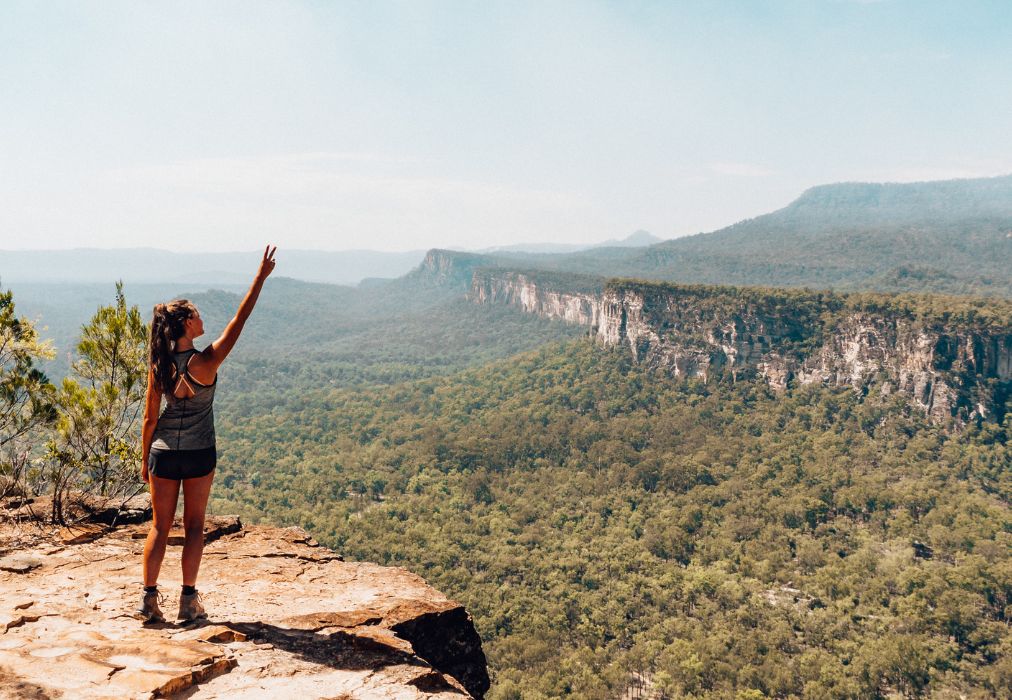
In this section we want to share general Australia travel tips to help you plan your trip.
When to visit
The best time to visit depends on where in Australia you are interested in going and what activities you want to do.
With 4 distinct seasons and a geography that stretches from the tropical north to the arid center and the balmier south, planning the best time to visit Australia is like putting together a jigsaw puzzle.
Here’s a breakdown of the different seasons. Remember that Australia is the southern hemisphere so the seasons work the opposite of Europe or North America.
Summer (December through February)
In summer, the average daily temperatures range from about 20 C to 37 C (68 F to 99 F) in the major capital cities, which makes the days long and hot. The Outback is extremely hot and the tropical regions experience monsoon rains.
This is the most expensive time to travel in Australia; it’s when kids are off school and when locals travel domestically. With the higher demand, come higher prices of flights and accommodation, and many cool events:
- New Year’s Eve in Sydney: Being one of the first major cities to ring in a new year, Sydney puts on an amazing fireworks display over Sydney Harbour that brings in huge crowds and is watched online globally. To enjoy it you’ll have to find a spot early in the day and camp.
- Australia Day: The country’s national celebration on January 26 marks the day the first British fleet arrived in Australia. Often referred to as “Aussie Day,” it’s a day of parades, barbecues and fireworks, as well as a day of reflection and conversations about Aboriginal reconciliation. However this has now become a controversial holiday and nation wide debate, and Indigenous Australians consider it to be a celebration of British invasion.
- Australian Open: Held annually in Melbourne, the Australian Open is one of the four main Grand Slam tennis tournaments bringing in the best tennis players and hundreds of thousands of fans to the grounds.
With more than 4 out of 5 Aussies living less than 50km from the coastline, summer is defined by beachy outdoor activities like surfing, snorkeling, diving, paddleboarding and our personal favorite, sunbathing.
Watch out, though, because the UV in Australia is as strong as it gets, and sunburns happen very easily due to the region’s ozone depletion and closeness to the equator.
Summer is mating season for many spider species in Australia, it’s jellyfish season in The Great Barrier Reef, and it is also when the mosquitoes come out to play. Be prepared with bug spray, and start reciting your spider mantras now: “most spiders are harmless, and play a crucial role in the ecosystem.”
Pro-tip: Summer’s popularity in Australia means that it’s important to make bookings well in advance and stay organized, so you won’t miss out on key experiences that usually sell out quickly, like Sydney’s harbour cruises, tours and accommodations near Uluru (Ayers Rock), and tours in and around the Great Barrier Reef.
Shoulder Season – Spring (September to November) and Autumn (March to May)
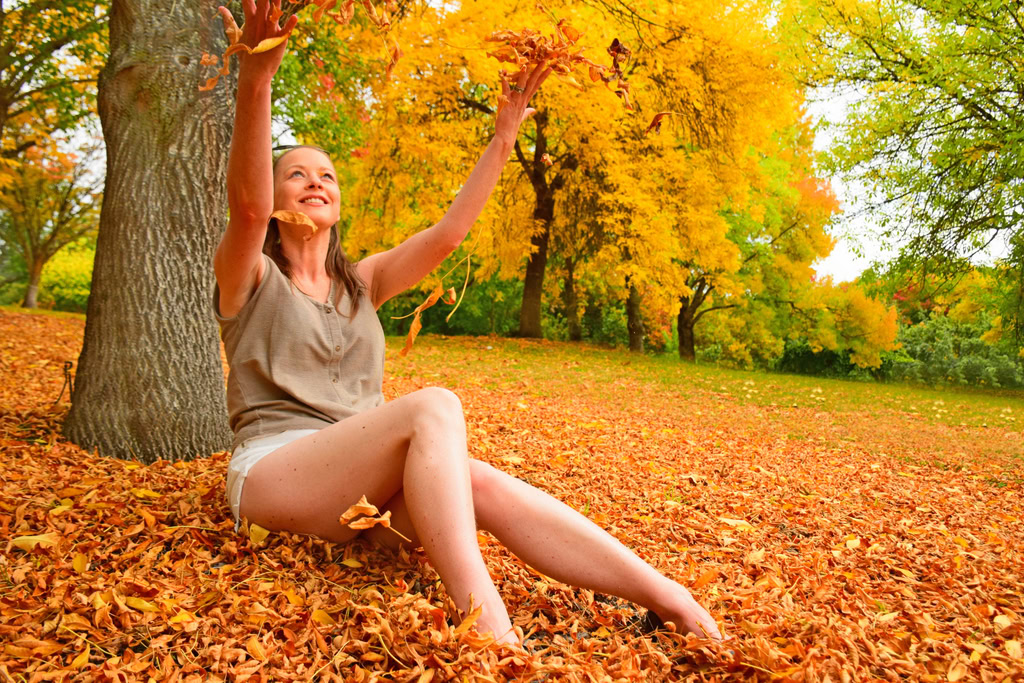
Things start to cool down slightly in autumn and warm up in the spring, with temperature averages ranging between 17 C in the south and 35 C in the north (63 F and 95 F) for both seasons.
Shoulder season is the best time to travel anywhere in the country. International flights to Australia are much more affordable than in summer, and the north, from Broome to Cairns, experiences the dry season, offering the perfect travel conditions.
Just like in summer, you’ll see locals hanging out at the beach and taking advantage of all this country’s natural landscapes have to offer.
Australia’s coastlines offer world-class surfing spots, and the shoulder seasons usually see prime conditions with smaller crowds compared to peak summer months. Destinations like the Gold Coast, Byron Bay, and Margaret River are popular among surfers.
Shoulder season is also a great time to explore Australia’s national parks on foot, with hiking trails in places like the Blue Mountains (NSW), Grampians (VIC), and Lamington National Park (QLD) offering stunning scenery and comfortable temperatures.
There are some interesting events happening in Spring and Fall:
- Vivid Sydney: Happening between May and June, Vivid Sydney puts on a show with beautiful light displays and music, all around the Sydney Harbour and other city locations.
- Byron Bay Bluesfest: Held over the Easter long weekend in April, this music festival near Byron Bay in New South Wales sees a lineup of renowned national and international artists in the blues, roots, and folk genres.
- Grafton Jacaranda Festival: Held in Grafton, New South Wales, usually in late October to early November, this festival celebrates the blooming of jacaranda trees (trees with gorgeous purple-blue flowers) with street parades, markets, and lots of performances.
Winter (June to August)
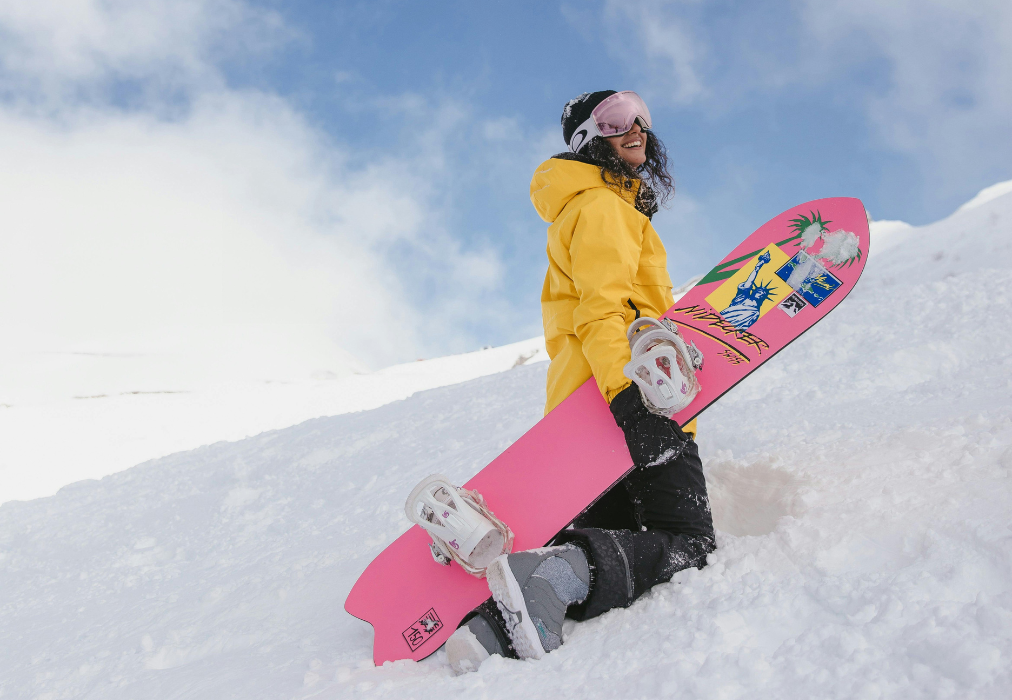
The winter months see average temperatures that range from 11 C (52 F) in the south to 30 C (86 F) in the north, with much lower ranges in the capital of Canberra and the mountain ranges.
Though you’ll still see locals enjoying the coastal lifestyle well into winter in places like Cairns, southern parts of the country experience full-blown winter to the likes of Canada and the Alps (without the blistering -40 C cold weather). Ironically, it’s rumored that the Australian Alps actually experience more snow than Switzerland!
Winter is generally considered dry season throughout the country, and with the more mild temperatures, there’s still tons of unique opportunities to get away from the typical Australian heat and embrace some winter traditions:
- Skiing and Snowboarding: Head to the Australian Alps for resorts like Thredbo and Perisher in New South Wales, and Falls Creek and Mount Buller in Victoria, to experience the huge skiing and snowboarding scene in Australia. These resorts offer a range of slopes for all levels, and don’t forget about the après-skis!
- Hot Springs: Relax and unwind in some natural hot springs, like the Peninsula Hot Springs or the Metung Hot Springs, with soothing baths amidst Australia’s stunning winter landscapes.
- Wine Tasting: Winter is a great time to visit wineries in regions like the Hunter Valley (NSW), Yarra Valley (VIC), or Margaret River (WA), when vineyards may have special events and tastings in a more cozy setting.
Pro-tip: Winter is the least popular season for international tourism, meaning prices for activities, accommodations and travel go down, and your ability to stretch out your budget and add some spontaneity goes up.
Public Holidays
There are a lot of public holidays in Australia. In addition to the federal dates, you also need to add state holidays and other local celebrations.
During public holidays you should expect most businesses, particularly those in tourist areas, restaurants, cafes, and essential services such as hospitals and emergency services, to remain open or operate with reduced hours, the same applies to public transportation.
Be prepared for any offices, retail shops, and government agencies like embassies or consulates, to be closed for the day.
Below are the public holidays of Australia. The King’s Birthday is an Australian public holiday, but the date varies across states and territories.
- New Year’s Day – 1 January
- Australia Day – 26 January
- Good Friday – 18 April (most Australian businesses closed)
- Easter Monday – 21 April (most Australian businesses closed)
- Anzac Day – 25 April
- Labour Day – 5 May (NT)
- Eight Hours Day – 10 March (TAS)
- Canberra Day – 10 March (ACT)
- Adelaide Cup Day – 10 March (SA)
- Labour Day – 10 March (VIC)
- Foundation Day – 2 June (WA)
- Bank Holiday – 4 August (NSW)
- Christmas Day – 25 December
- Boxing Day – 26 December
Passport and visa requirements
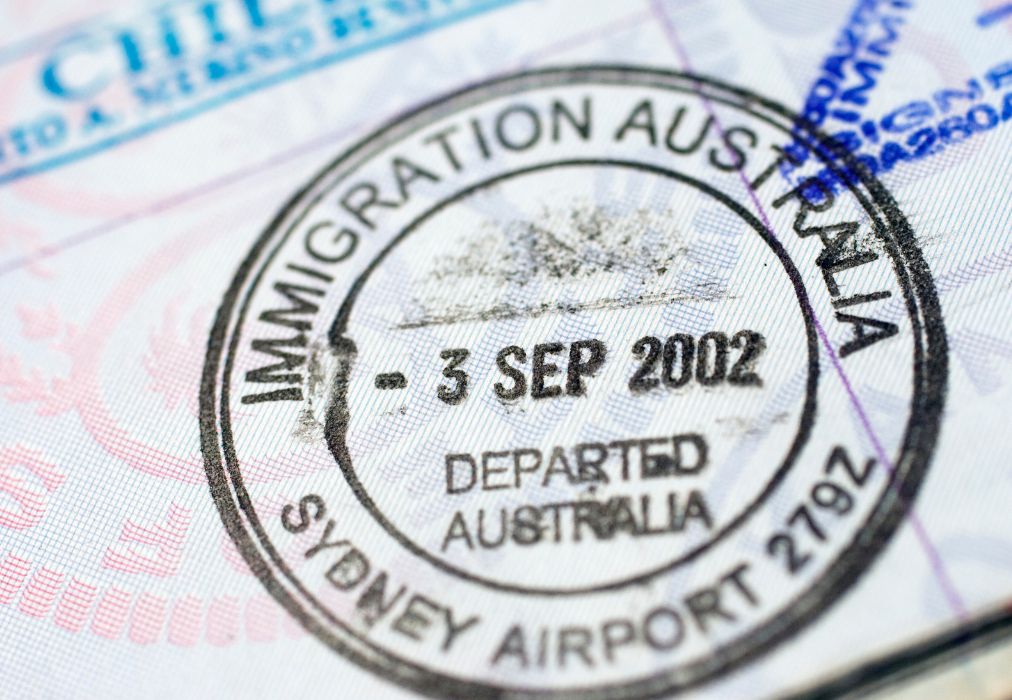
All travelers to Australia except for New Zealand citizens, need to obtain a visa or travel authorization before traveling, and you will not be allowed to board your flight without proof.
European Union citizens, travelers from the US and Canada can obtain an Electronic Travel Authority (ETA) for tourism or business purposes. Other nationalities may need to apply for an actual visa.
To apply for an ETA, you need to download the ETA app from the Department of Home Affairs website. Upload your documents and you should be approved within 72 hours. Your ETA is valid for 12 months with unlimited entries for a maximum of 90 days each.
Unlike many other countries, Australia does not require passports to be valid for six months after your departure date unless transiting through another country that does, but it does recommend that it does not expire while you are in Australia.
To confirm your requirements and the type of visa you need, check the official Government website here.
Health and safety
Nobody wants to get sick when on vacation but, if the worst is to happen, it pays to be prepared.
Bring all the medication you’ll need: During your trip to Australia, you will typically never be too far from an urban center, a doctor, a hospital and a pharmacy, unless you are traveling in The Outback where you could be days from any proper urban center. We strongly recommend you bring any prescription medication you may need and enough of it to last you the entire trip.
Your specific medication may not exist in Australia, or it may require a prescription you need to see a doctor for, so save yourself time and hassle by bringing everything you may need with you. Review what you should bring in your first aid kit here.
IMPORTANT: Some prescribed and over-the-counter medicines available in your country might be considered controlled substances in Australia. A doctor’s prescription is required in all cases, which should mention your details, the types of medicine and the condition treated. More details here.
Get that coverage: We never leave the house without purchasing extensive medical and travel insurance coverage and this is why we make it mandatory to join our tours. You should make sure that you have adequate medical insurance to cover any unforeseen medical expenses.
Unexpected accidents do happen, and if you needed to be evacuated back home with an injury, the medical bill could bankrupt you.
The best travel insurance will differ for each traveler, depending on the nature, style, and length of your trip, so we recommend using an aggregator and comparison tool such as Travel Insurance Masters to find the right one for you depending on what coverage you want, age, location, trip, etc.
In case of emergency: Australia’s emergency services number for immediate assistance with fire, police, and ambulance services is 000. For non-emergency situations requiring police assistance, the number is 131 444, which helps to reserve the emergency line for critical incidents where immediate response is necessary.
Telephone advice is also available 24/7 at 13 11 26 from anywhere in Australia for toxicology information and help regarding poisonous or venomous situations and encounters.
Tap water: Tap water in Australia is considered safe for drinking nationwide. It is treated to high standards and undergoes regular testing to ensure quality and safety for consumption.
Biosecurity risks: Australia is obsessed with protecting its borders from any pest or biosecurity risks. Because of the many endemic species that call it home and several unfortunate cases of unintentional pests brought from overseas, all incoming passengers have to fill in a declaration form stating anything they are bringing in, including food from the plane, and discard all of the banned items in the dedicated bins prior to customs check.
Unless you want to end up in the infamous Border Security TV show with a hefty fine. Check what you can bring, what you need to declare and what you can’t bring here.
Safety in Australia for solo female travelers
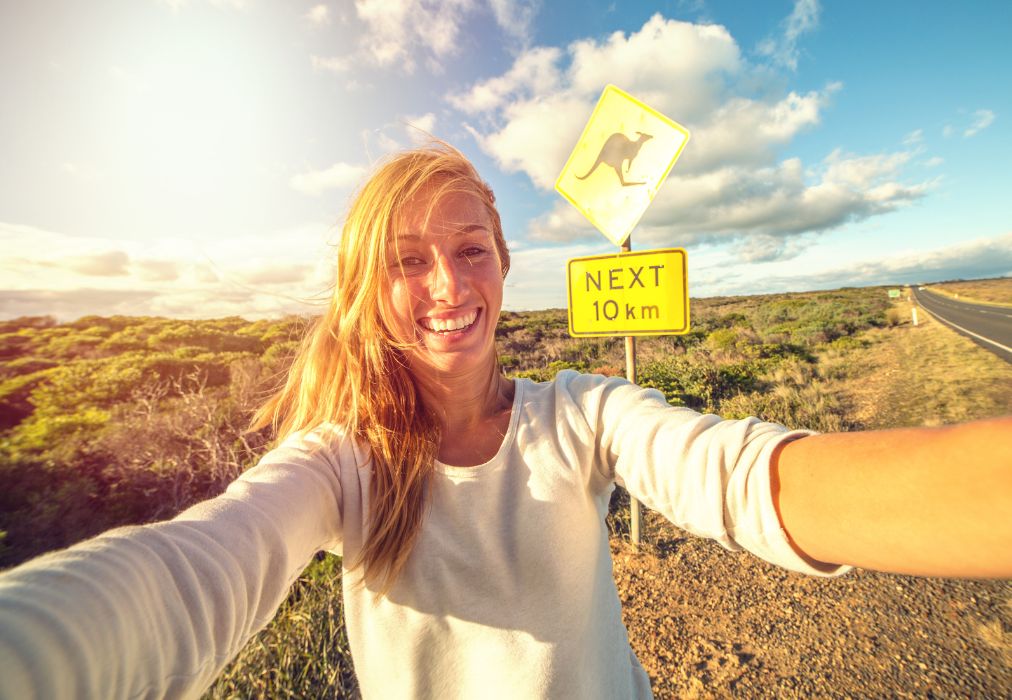
Australia is considered one of the safest destinations for solo female travelers in terms of things like petty theft and physical safety, but there are a unique number of dangers when exploring a country so exposed to the elements.
Dehydration is one of the biggest risks to safety in Australia; the country’s climate varies widely, but many regions experience intense heat and arid conditions, especially during summer. Dehydration can be a significant risk due to the combination of high temperatures, low humidity, and increased physical activity. The risk is higher if you’re engaging in outdoor activities like hiking, exploring deserts, or even just walking around cities, and heatstroke is common. Travel with a reusable drink bottle and always have plenty of water.
Drowning, not sharks, is one of the most critical safety risks when swimming in Australia, and this can happen quickly and silently, often without immediate warning signs. Swimming is a big part of daily life in Australia, from beaches, to swimming holes, and boating. You should be aware of strong currents, limit your alcohol consumption, and always pay attention to safety signs and notices in the area you’re about to swim. If a council or government sign says not to swim, don’t.
Personal safety in cities and urban areas is generally not a concern, but incidents of petty crime, such as pickpocketing or theft happen as they could anywhere. Always keep your valuables safe and your bag in the front and zipped. Slash and theft proof cross-body bags like the ones we listed on this article are a great idea, and in crowded areas, keep your arm on your bag’s zipper for extra protection.
Remote and rural areas: Traveling alone in remote regions poses specific challenges, including isolation and limited access to immediate help. If you’re traveling in isolated parts of the country, make sure you leave your travel plans with someone you know, and have an emergency communication device like a satellite phone, with a clear understanding of the local environment and emergency services.
Hitchhiking is not recommended in Australia, though this used to be a big part of the Australian tourism culture as an inexpensive means of travelling around a big country. Hitchhiking is actually illegal in the states of Queensland and Victoria, but even in other parts of the country which allow it, it’s very rare to see a hitchiker on the road these days. The image of hitchhiking was irreparably damaged after Ivan Milat (Australia’s most notorious serial killer), murdered seven young backpackers in NSW in the late 1980s and 1990s.
Wildlife does not actually pose a threat in Australia, however the choice to interact with wildlife does. While Australia has a reputation for its potentially dangerous animals like snakes, spiders, and crocodiles, stay informed about the wildlife in the areas you’re visiting, follow local safety guidelines, and take necessary precautions when hiking or camping and you’ll be fine. Observing and not interacting with wildlife means enjoying them from a distance; do not touch a wild animal in Australia, do not try and pick it up or take a selfie, do not feed wildlife, and do not generally alter its behavior.
Wildlife on the roads is a big safety threat in Australia, and commonly cause collisions. You should be extremely cautious when driving, especially at night. Be alert when driving, and keep an eye on the roads for kangaroos, koalas, wombats, echidnas, and wallabies, many of whom may appear out of nowhere.
If you do notice an animal on the road, it is important to consider the safety of yourself and other drivers. Never swerve to avoid hitting an animal, but try to slow down or come to a safe stop. If you hit an animal, make sure to call 1300 ANIMAL or your local wildlife rescue group to assess the animal, or take it away for treatment.
Read our full article on safety tips here.
Want to know how to stay safe and prevent a negative experience or encounter on your travels? Check out EMPOWERFUL, a series of 35+ sessions, 40+ experts and over 50+ hours of learning via masterclasses, panel discussions, and inspiring interviews to empower YOU to travel solo!
Getting to Australia
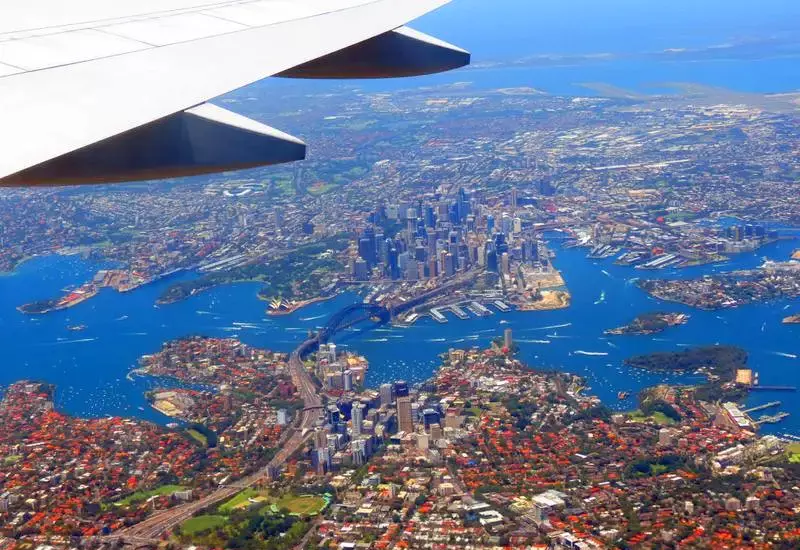
Australia is a very isolated country that is really only close to New Zealand, and some of the Pacific nations. Besides that, the nearest countries are Singapore and Indonesia, which are a 6h+ flight away from the northern parts of the country.
The easiest way to arrive in Australia is by air.
Major airlines such as Qantas, Virgin Australia, Emirates, Singapore Airlines, and British Airways offer regular flights to key Australian cities like Sydney, Melbourne, Brisbane, Perth, and Adelaide.
Direct flights are available from major cities across Asia, and the Middle East, serving as a main stepping stone between Europe and Australia. From the US, you can catch a direct flight from the West coast or Hawaii.
Traveling to Australia by cruise ship is another popular option, with a more leisurely and scenic experience, and multiple stops and excursions on the way. Popular cruise lines like Princess Cruises, Royal Caribbean International, P&O Cruises Australia, and Holland America Line offer routes to Australia.
These cruises typically depart from ports in Asia (such as Singapore and Hong Kong), Europe (including Southampton and Barcelona), North America (such as Los Angeles and Vancouver), and New Zealand (from Auckland and Wellington) and dock at Sydney, Melbourne, Brisbane, and Perth.
Getting around Australia
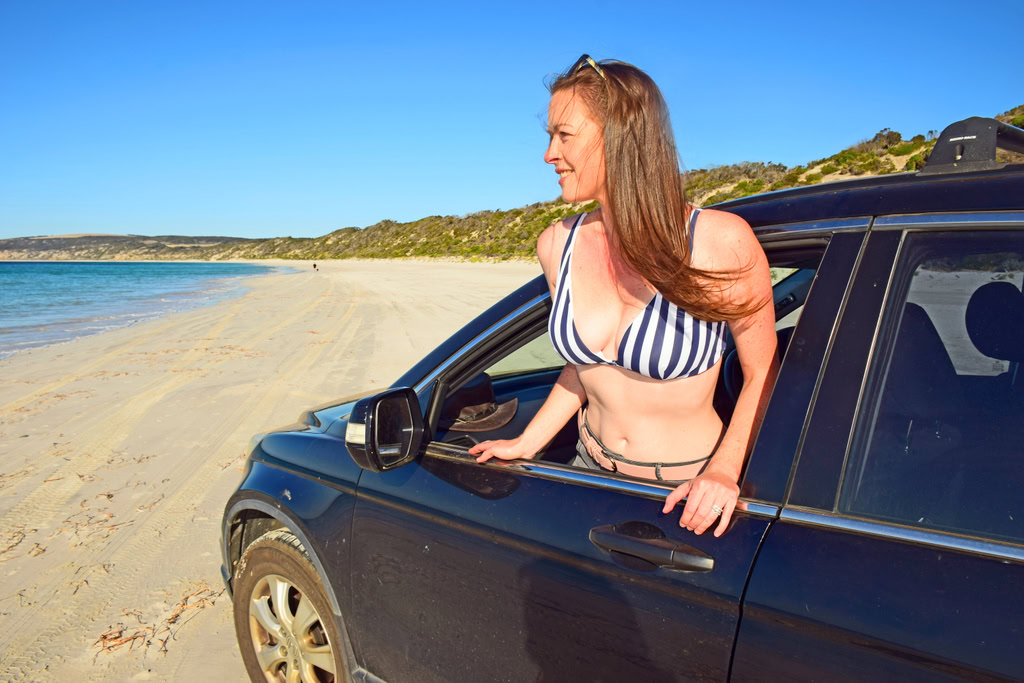
Australia is a huge country and most visitors underestimate how long it takes to get around. If you are in the northern parts of the country, it is in fact faster to reach Southeast Asia than to get to Sydney or Adelaide.
Domestic flights are operated by Qantas, Virgin Australia, Jetstar, and Rex, with frequent connections between the main cities. If you need to visit some of the smaller islands, you may need to take private propeller planes.
Australia also has an extensive rail network, though it primarily serves longer intercity routes and scenic journeys. Some iconic long-distance train journeys include:
- The Ghan: This route travels from Adelaide to Darwin, crossing the continent through the Outback.
- Indian Pacific: Connecting Sydney and Perth, the Indian Pacific goes coast-to-coast across the Nullarbor Plain.
- Spirit of Queensland: This route links Brisbane and Cairns, with a beautiful scenic coastal route.
These trains have decently comfortable accommodations and panoramic jaw-dropping views.
Buses and coaches are the more affordable way to get around, albeit much slower. Greyhound Australia connects major cities, towns, and tourist destinations.
Though the most popular way to get around is renting a car or campervan, which allows for exploring independently and over a longer period of time. Major cities and airports have well-established car rental services from companies like Hertz, Avis, Budget, and Europcar.
Australia’s road network is well-maintained, making it relatively easy to navigate between cities and explore remote areas.
Keep in mind that driving distances can be long, especially in rural and Outback regions, where you could be driving for days without seeing another soul. Carrying enough food, water and fuel is essential.
And as mentioned above in our safety section, you should make wildlife on the roads your number one thing to watch for when driving.
How many days to spend in Australia
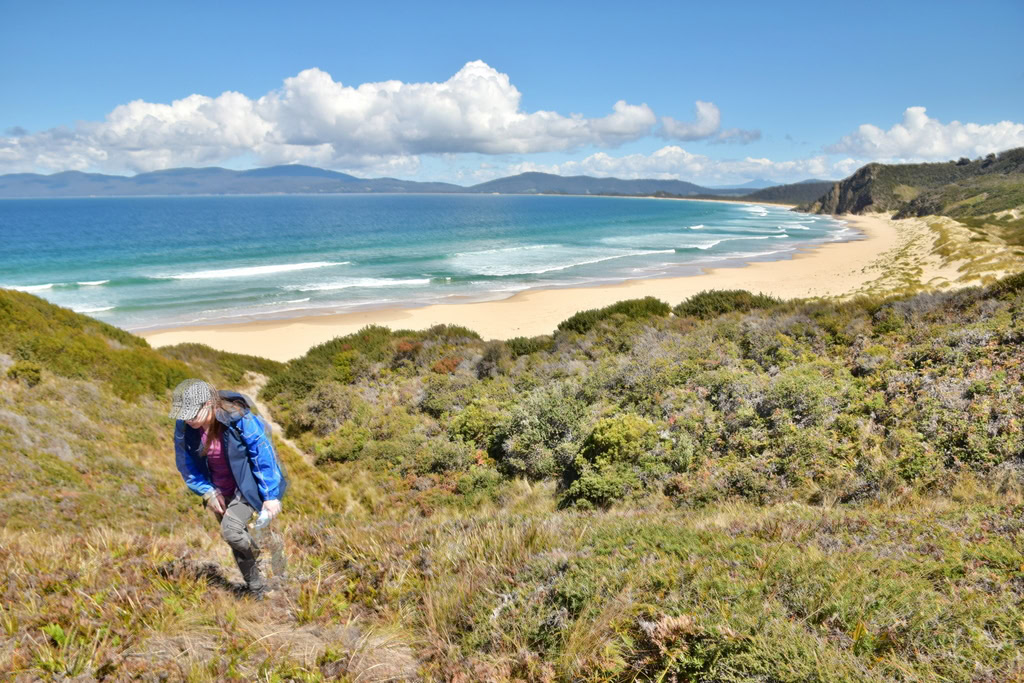
To see Australia properly you would need a few months. The average visitor can typically spare two weeks, (three if you’re lucky), which means you will have to pick where you go depending on your likes and wants.
Major Cities and the “Bucket List”: If you plan to visit Australia’s major cities (Sydney, Melbourne, Brisbane, Perth, Adelaide), a minimum of 2-3 weeks should give you just enough time to experience these cities’ iconic must-sees, meet a few locals, immerse yourself in their gastronomy, and enjoy the beaches and national parks in and around each city on day trips.
East Coast or West Coast: Exploring either the East Coast (from Cairns to Sydney or Melbourne) or the West Coast (from Perth to Broome) should take about 2 weeks each.
The Great Barrier Reef: If you want to explore the islands and beaches of The Great Barrier Reef, you should consider at least a week, including days diving and some days in sandy beaches and coastal towns.
The Northern Territory: The northern part of Australia is vast and rich in Aboriginal culture and untouched landscapes. Consider at least a week to explore it.
The Outback: If you want to discover Australia’s Red Centre’s Uluru and Alice Springs, you should add 2-4 days to fly in and out.
Tasmania: The remote and pristine island of Tasmania (pictured above) deserves a week to drive the loop of the island and stop for landscapes, small towns and wildlife.
The Grand Tour: If you want to see the main highlights of what Australia has to offer, I’d recommend at least 4-6 weeks. A month should give you lots of time to do some city exploration, relaxing coastal drives, breathtaking hikes and immerse yourself in the country’s Aboriginal history and laid back culture.
Travel essentials for Australia
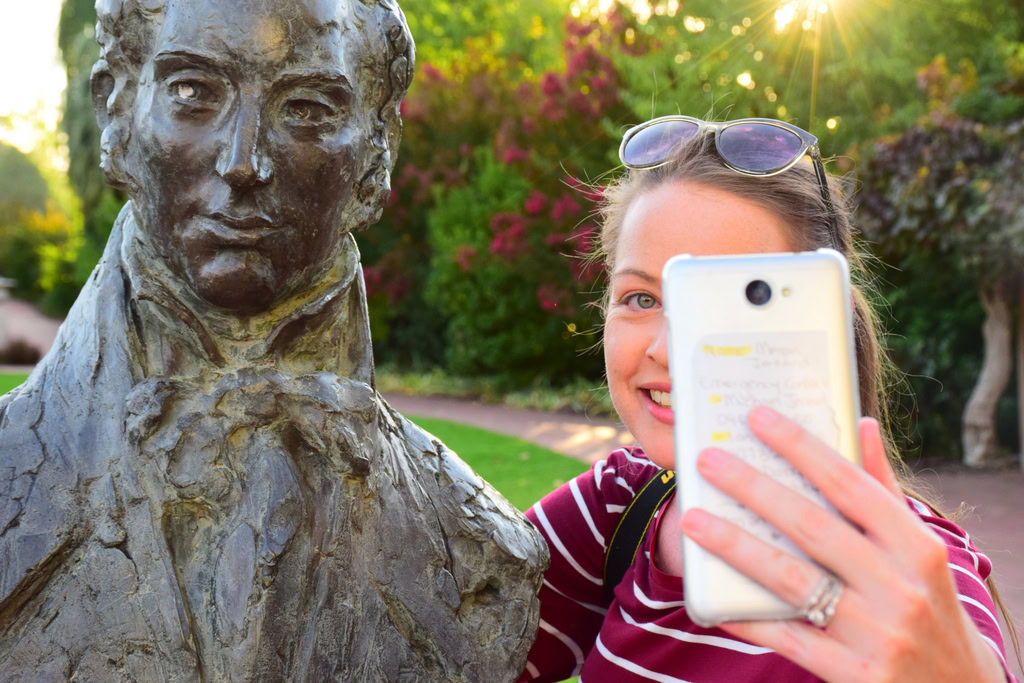
In this section we will look at a range of other things to consider when traveling to Australia as a solo female traveler.
Staying connected: Public free WiFi hotspots are easy to find but if you want to be connected all the time, explore roaming options with your home mobile provider, get a local SIM card at the airport or in town or buy an eSIM like Airalo, AloSIM or Holafly (unlimited internet and a 5% discount).
Make sure your phone is unlocked so that a foreign SIM card or eSIM will work, and get the store staff to help you set up the new SIM card before leaving the shop so they can help you with any settings that need changing.
Dual voltage: Australia uses a standard voltage of 230 volts AC (50 Hz), which is much higher than Canada and the US’s 120 AC (60 Hz). Many modern electronic devices, such as laptops and smartphones, are dual voltage and only require a plug adapter to be used in Australia.
Regardless, it’s important to check the voltage ratings on your specific electrical devices to ensure they are compatible before use, or bring along a voltage converter to make sure you don’t fry your favorite hair tools.
Australian plugs: Australia primarily uses a Type I electrical outlet and plug with two or three flat pins in a V-shape, with the top pin being the grounding pin. If you are traveling to Australia from a country that uses a different plug type, such as Type A (used in the US and Canada) or Type C (used in Europe), you will need a plug adapter to fit your devices into Australian electrical outlets.
Sunscreen: We’ve said it before in this article, but we will say it again – sunscreen is VERY important in Australia due to the country having some of the highest levels of UV radiation in the world.
With significant depletion of the southern hemisphere’s ozone layer, protecting your skin with sunscreen prevents sun damage, premature aging, and reduces the likelihood of developing skin cancers, so put it on and make sure to reapply. We recommend Aussie brand Sun Bum for its chemical free, vegan, gluten free and cruelty free formula that smells divine!
Money and currency
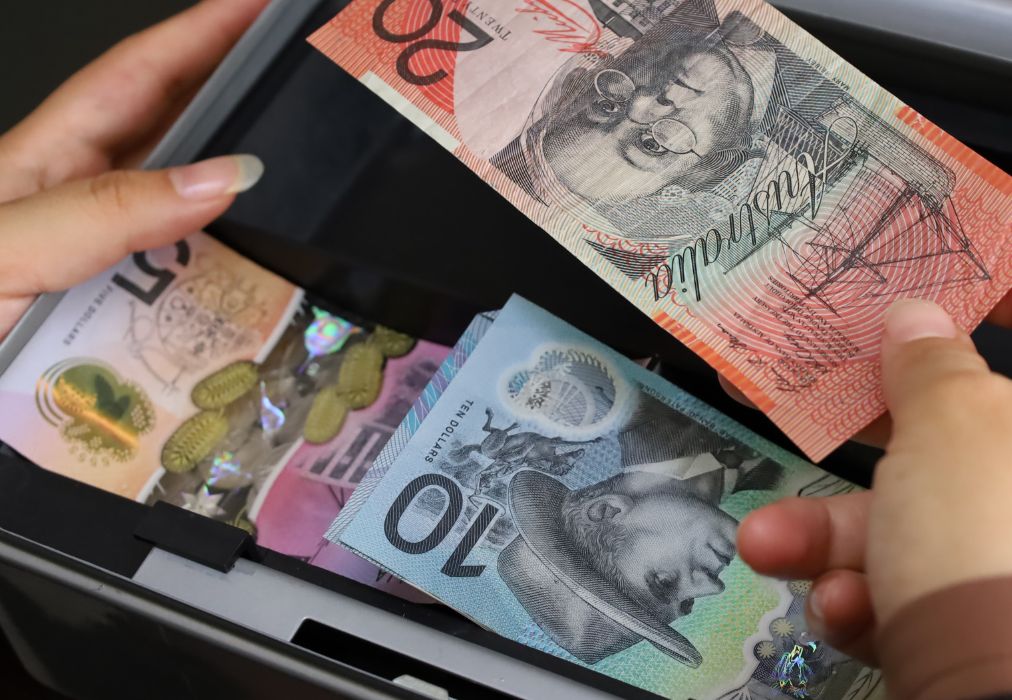
Currency: Australia’s currency is the Australian Dollar (AUD). Notes come in denominations of $5, $10, $20, $50, and $100, and coins are in $2, $1, 50 cents, 20 cents, 10 cents, and 5 cents.
Currency exchange services are available at airports, banks, exchange bureaus, and some hotels. However, be aware that these services often charge fees or offer less favorable exchange rates, so it’s wise to compare rates and fees before exchanging money.
Credit cards are now widely available and can be used to pay for more things so you won’t need cash for a lot of purchases, and most places, even buses and train stations, accept pay wave and Apple / Android pay.
ATMs: ATMs are widely available throughout Australia in cities, towns, and tourist areas. Major banks such as Commonwealth Bank, ANZ, Westpac, and NAB have extensive ATM networks, often found in shopping centers, airports, and hotels. Many ATMs accept international cards, but it’s advisable to check for potential fees from both the ATM operator and your home bank.
Credit cards: Major credit cards such as Visa and Mastercard are widely accepted in Australia, especially in larger cities and tourist areas. Smaller shops and businesses may have a minimum spend for card transactions or prefer cash for small purchases. Contactless payment methods, such as Apple Pay and Google Pay, are becoming increasingly popular. American Express is accepted by most, but not all businesses in Australia.
Tipping culture: Tipping in Australia is generally not expected, since Australia has one of the highest minimum wages in the world, but it’s sometimes suggested in tourist-heavy areas like around the Sydney Harbour or at high end restaurants. If you do decide to leave a tip, 10% of the bill is pretty standard.
Local culture and customs
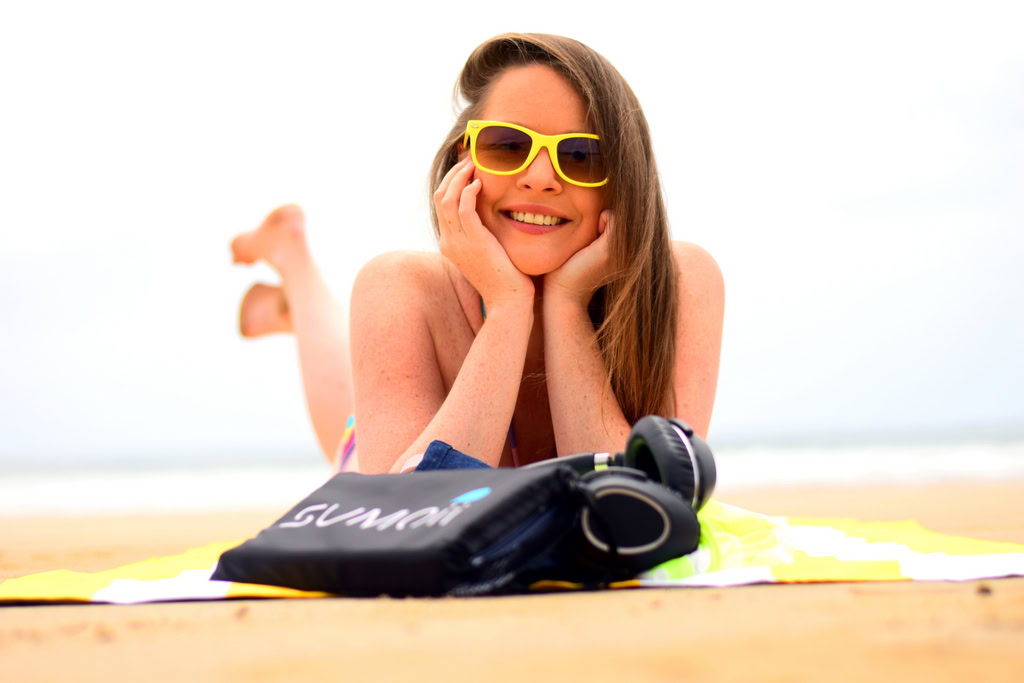
It is always important to learn more about the culture and customs of a place you visit, not only so that you don’t offend the locals but also so that you can learn more about it and gain the perspective that travel is most valuable for.
Respect local customs: Australians are generally a laid back bunch and this is reflected in their cultural attitudes towards casualness and comfort. It’s not uncommon to see Aussies walking around without shoes on, or living in their Havaianas, which they refer to as thongs. Greetings are pretty informal with a quick hug being standard in friendly, casual settings.
Enjoy the banter: Humor is a key way Australians connect with those around them, and banter is part of Australian culture. Good-natured humor is usually well-received, but it’s important to avoid crossing the line into offense or mockery. Expect a lot of sarcasm in Australian conversation.
Respect Nature and the environment: Australia’s stunning landscapes and natural beauty is cherished. Show respect for the environment by following designated trails on your hikes, avoiding littering anywhere but particularly at the beach, and adhering to conservation guidelines to make sure wildlife is not put at risk. Aussies take pride in their country’s natural heritage and expect that visitors will share this respect.
Basic Aussie slang
Though Australians speak English, we have made it into our own language with the use of slang and unique sayings that are hard for even English-speaking foreigners to know what we’re talking about. This list of Aussie slang should help you out:
- Arvo – Afternoon.
- Bogan – An unsophisticated person, or person of lower socio-economic status.
- Brekkie – Breakfast.
- Dunny – Toilet.
- Esky – A cooler or icebox used to keep drinks cold.
- Fair dinkum – Genuine or real.
- G’day – Hello (though this is a bit stereotyped, and saying hello is more common though than saying G’day)
- Mate – Friend or buddy.
- No worries – It’s okay or don’t worry about it.
- Ripper – Great or excellent.
- Sanger – Sandwich.
- Sheila – Woman.
- Stubby – A small bottle of beer.
- Thongs – Flip-flops or sandals.
- Tinnie – A can of beer.
Iconic Australian Animals and Ethical wildlife tourism
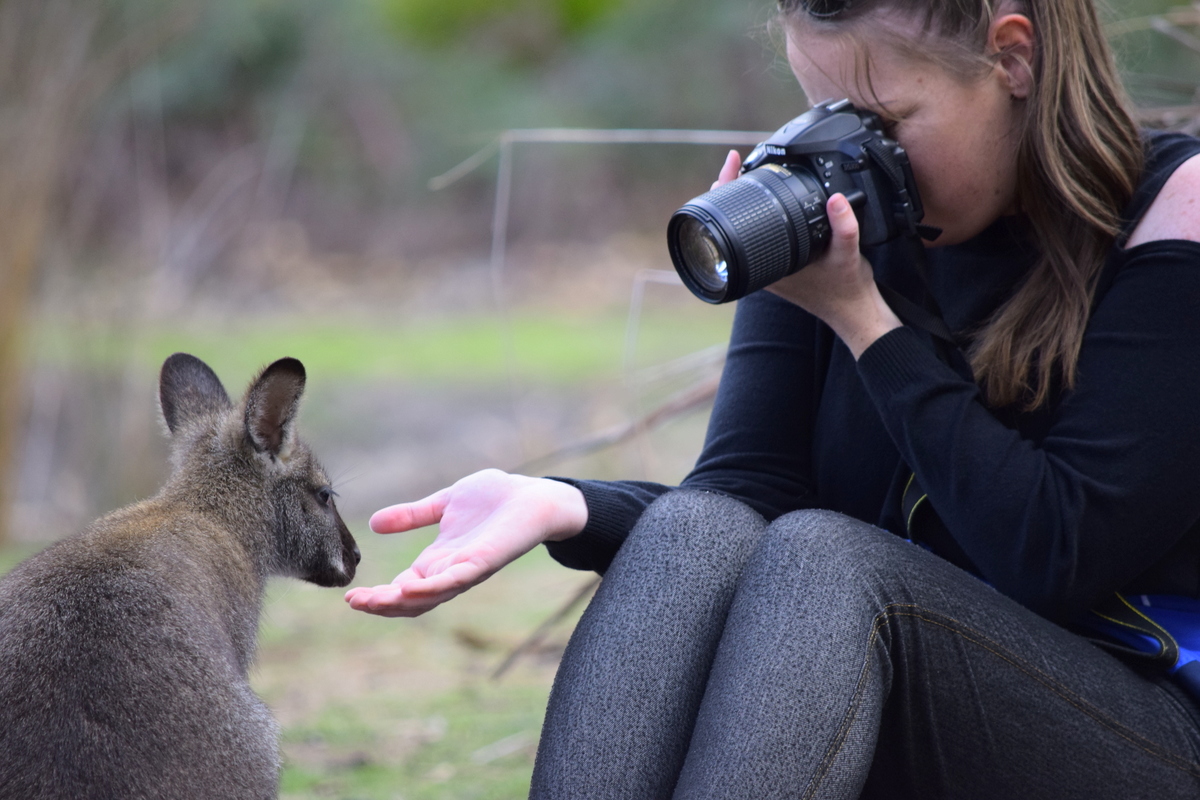
With Australia being known internationally for its wildlife, it’s no wonder the animals are a tourist attraction in and of themselves. Here’s a list of Australia’s iconic creatures to keep an eye out for and a few tips on how to recognize ethical wildlife tourism:
Kangaroos and ethics of feeding
Kangaroos are everywhere and are famous for their strong hind legs, long tail and the pouch on their stomach for their young joeys. Their hopping is an efficient way to cover large areas while looking for food and water.
While foreigners are intrigued, the moment you drive around more rural parts of the country you will quickly learn to treat them as a road hazard, as they have a tendency to jump in front of your car unexpectedly.
It is very common in Australia for tourists to feed kagaroos, but please consider the ethical impacts of this practice, and follow the rules of parks and reserves which prohibit the feeding of kangaroos.
Kangaroos have specialized diets consisting primarily of grasses and leaves. Feeding them human food or even unsuitable animal feed can disrupt their natural diet and lead to nutritional imbalances or health problems. Regular feeding by humans also can alter a kangaroo’s natural behaviors, such as foraging and social interactions, increasing the risk of them becoming dependent on human-provided food, which can impact their survival skills and independence.
Feeding kangaroos throughout the country has also lead to habituation, where they become accustomed to human presence and expect food from people. This can increase the risk of aggressive behavior, which becomes a safety risk to humans.
Koalas and the ethics of cuddling
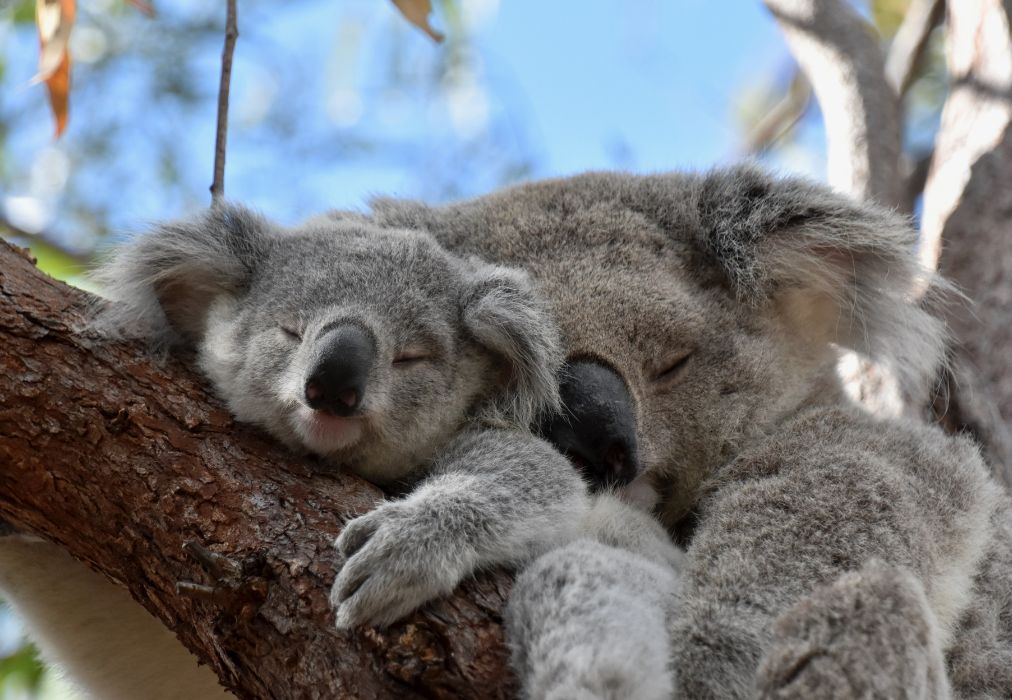
Koalas feed almost exclusively on eucalyptus leaves, which are toxic to most other animals. They eat up to 1 kilogram (2.2 pounds) of leaves daily, and then sleep for up to 18 hours a day to digest their fibrous diet and conserve energy.
While they may hold the title for cutest Australian creature, there are serious ethical implications of cuddling or touching them, as is still offered in many wildlife parks and attractions around the country.
Koalas are wild animals with specific needs and stress responses. Handling and close interaction can cause significant stress and disrupt their natural behavior and negatively impact their well-being. The stress of handling can weaken their immune systems, making them more susceptible to illness, but they also have an extremely delicate rib cage, and improper handling can exert undue pressure on their bodies.
Our Australia tour visits the Koala Conservation Reserve in Phillip Island, out of Melbourne, which is the closest you can get to koalas in their natural habitat while maintaining an ethical distance (walking along tree-top boardwalks to watch koalas up close).
Crocodiles & the ethics of croc farms / shows
Saltwater crocodiles are the largest living reptiles and can be very dangerous, while freshwater crocodiles are smaller and less aggressive, primarily living in northern Australia’s rivers and wetlands. There are quite a few of them in the streams near my house in Far North Queensland.
There are many crocodile farms throughout Australia which are set up as a tourist attraction, and these often operate under the premise of conservation, education, and sustainable utilization of crocodiles. However, the ethics of visiting are complex and multifaceted.
While some farms emphasize conservation and breeding programs to protect crocodile species and prevent poaching, others may prioritize commercial interests, such as selling crocodile skin and meat. This blurs the lines between conservation efforts and exploitation, and there are also animal welfare concerns of keeping crocodiles in captivity. Enclosures and conditions don’t always replicate their natural habitats, causing stress, inadequate space, and unnatural behaviors. It’s important to consider whether the farm maintains high standards of animal care, and not support commercial insdustries like crocodile products.
Wombats and the ethics of selfies
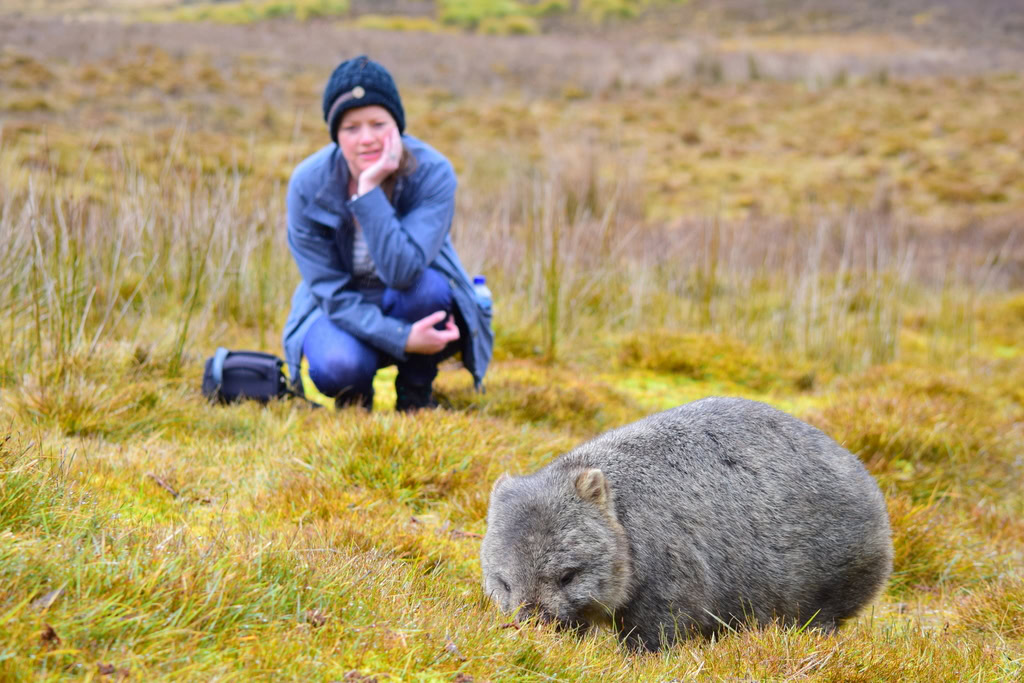
Wombats are sturdy creatures with strong claws used for digging complex burrow systems. They are the only animal that poops squares and they can truly destroy your garden, deck or roof.
Taking a selfie with a wombat has started trending in Australia, particularly in Tasmania, but this is puts them at significant risk. To the point where Tasmania’s Maria Island makes tourists agree to the following pledge:
Wombats, when you trundle past me I pledge I will not chase you with my selfie stick, or get too close to your babies. I will not surround you, or try and pick you up. I will make sure I don’t leave rubbish or food from my morning tea. I pledge to let you stay wild.
Close contact, including selfies, can cause significant stress to wombats and disrupt their natural behavior. It is important to observe them from a distance.
Other Australian wildlife
Platypus: A very unique mammal that lays eggs instead of giving birth to its young. Its duck-like bill and webbed feet make it one of the most unique animals in Australia. You can spot them in the wild in rivers and streams throughout the country.
Tasmanian Devil: Yes, like the Looney Toons character. Tasmanian devils are small but fierce, and are known for their powerful jaws, bone-crushing bite and loud, growling noises. The Tasmanian devil is critically endangered because of a severe disease known as Devil Facial Tumour Disease (DFTD). This transmissible cancer has devastated populations since the 1990s, and now there are fewer than 25,000 left in the wild. You can see them in Tasmania.
Emu: The second-largest bird after Ostriches and can run at impressive speeds of up to 30 miles per hour.
Dingo: Wild dogs that are skilled hunters and can live in a range of habitats from deserts to forests. They are one of the only dog breeds not domesticated by humans.
Quokka: Small marsupials with a friendly, smiling face and a curious nature. They’re especially popular on Rottnest Island, where they often approach people for a photo opportunity (I’m sure you’ve seen the selfies).
Fairy Penguins: Yes, Australia has penguins! Fairy penguins, or Little Penguins, are the smallest penguins in the world at about 12 inches tall. They are found along the southern coast of Australia, including places like Phillip Island in Victoria, which we will visit during our tour of Australia. They are not only adorable but also endangered.
Local Cuisine
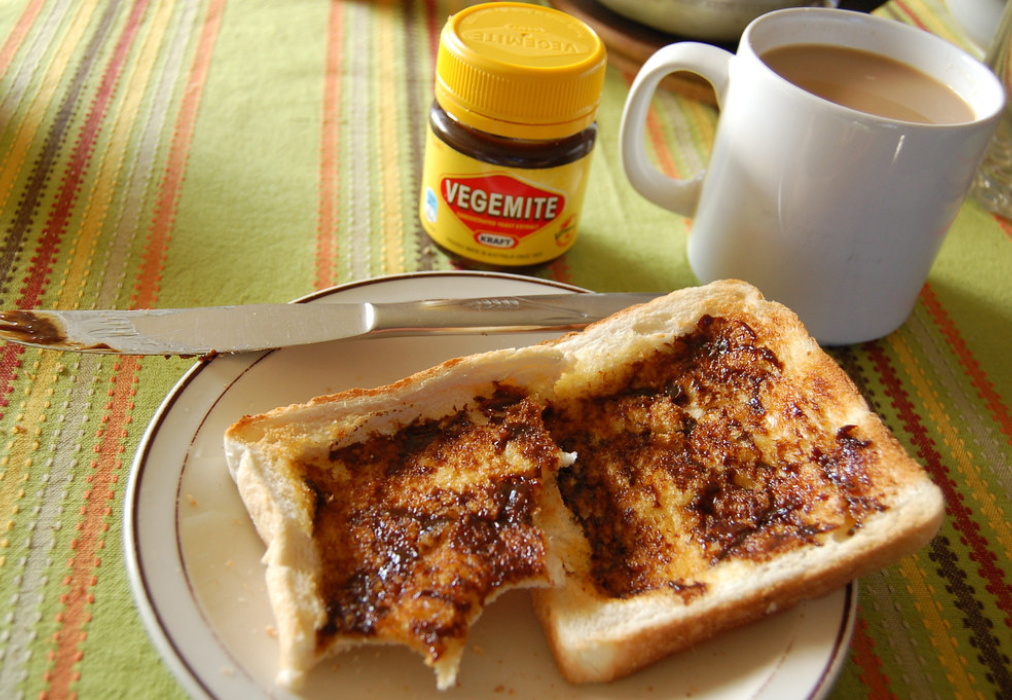
Australia’s food scene is top notch, especially in Melbourne and Sydney, and you’ll find everything from Michelin star restaurants and huge food markets to cool cafes and casual eats, all showcasing fresh, local ingredients and a mix of global flavors.
While there isn’t a well defined Australian cuisine, and due to it’s multiculturalism you’ll find international food very much engrained into the culture, there are many dishes that are considered local.
Best Australian Foods to try
Some of the most popular must try:
Kangaroo Steak: Lean and flavorful, kangaroo steak is often grilled on the barbecue or pan-seared. It’s a popular alternative to beef and can be served with vegetables or in salads.
Emu Sausages: Gamey flavor compared to traditional pork sausages and commonly enjoyed on the barbecue.
Australian BBQ: It’s internationally known that Aussies love a good barbecue, and cook up a mean variety of grilled meats, including sausages (snags), steaks, lamb chops, and shrimp, with lots of other grilled dishes and sides. A BBQ is one of the most authentically Aussie ways to spend a Sunday.
Meat Pie: A classic savory pie filled with minced meat, gravy, onions, and sometimes mushrooms or cheese, enjoyed at sports games or just as a quick meal. You will find plenty of fast food joints and bakeries selling them in the cities.
Vegemite on Toast: The dividing iconic Australian spread is made with a salty dark yeast extract and usually put on buttered toast. It’s the Australian version of the British Marmite. It is a love/hate food that cannot leave you untouched.
Damper: A simple Australian bread traditionally baked in the coals of a campfire made with flour, water, and sometimes milk.
Chicken Parmigiana: “Parmi” is a dish of breaded and fried chicken topped with a tomato sauce and melted cheese, often served with a side of salad or “chips” (fries). You’ll find this on the menu of every Aussie pub, and they’ll know what you mean if you simply order a ‘Parmi’.
Best Australian Desserts to try
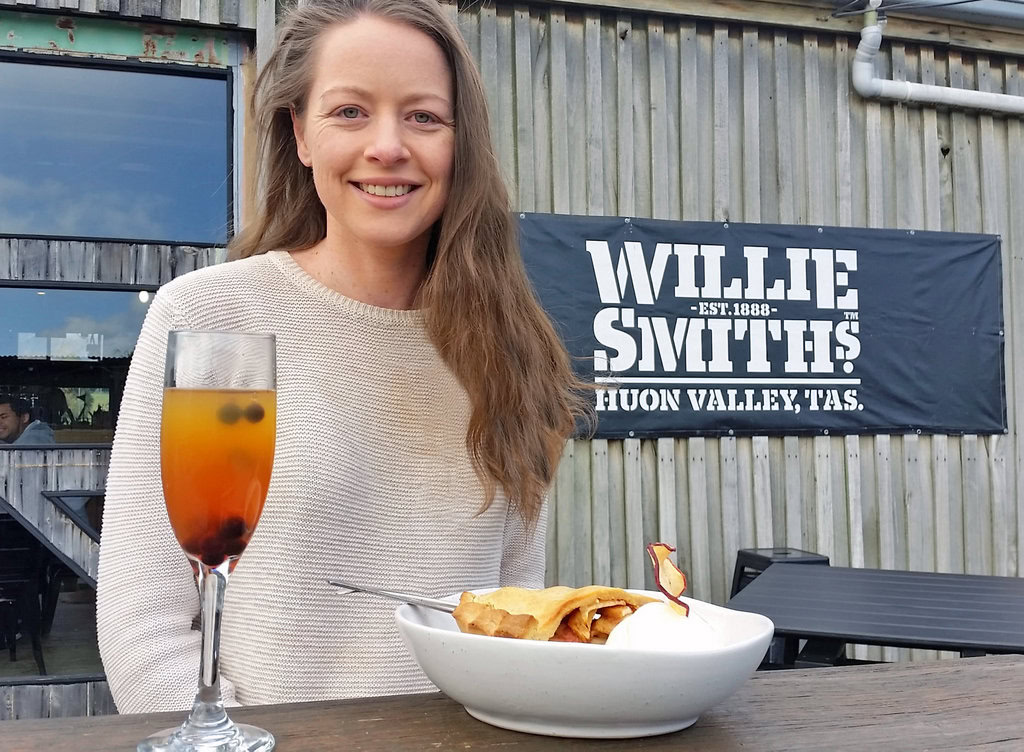
Aussies have a range of sweets they love to eat:
Apple pie: Apple pie is one of the most loved Australian desserts, and almost everybody’s grandma has a special recipe to make it. While its origins aren’t Australian, there are many apple growing regions throughout the country that make this dish very local, like the renowned Huon Valley in Tasmania. Order it with a scoop of vainlla ice-cream, as pictured above.
Pavlova: A meringue-based dessert with a crispy outer shell and a soft, marshmallow-like inside, typically topped with fresh fruit and whipped cream. There is an ongoing debate over who invented it and whether this is a Kiwi or Aussie dish. The jury is still out, as both countries claim it for themselves.
Lamingtons: Sponge cake squares dipped in chocolate and rolled in coconut flakes, often enjoyed with tea or coffee. Travel with floss, as they are delicious, but you’ll get the coconut flakes stuck in your teeth.
ANZAC Biscuits: Chewy cookies made with oats, coconut, and golden syrup, originally baked by Australian and New Zealand soldiers’ families during World War I. You’ll find these in abundance in local bakeries and shops on the ANZAC Day Public Holiday every year on 25 April.
Tim Tams: A beloved and iconic chocolate biscuit or cookie with layers of different flavored creams in between two biscuits and coated in chocolate. This is Aussie’s comfort sweet and what we bring friends and family living overseas. Tim Tams now come in every flavor possible.
Sticky Date Pudding: A moist sponge cake made with dates and served with a rich caramel sauce, often accompanied by vanilla ice cream.
Fairy Bread: Often served to children, fairy bread is a quick and easy treat of white bread spread with butter and topped with hundreds and thousands (sprinkles). It tastes as good as it looks.
Raspberry Coconut Slice: A sweet, no-bake dessert made with a base of crushed biscuits, coconut, and raspberry jam, topped with a coconut layer.
Best Australian drinks to try
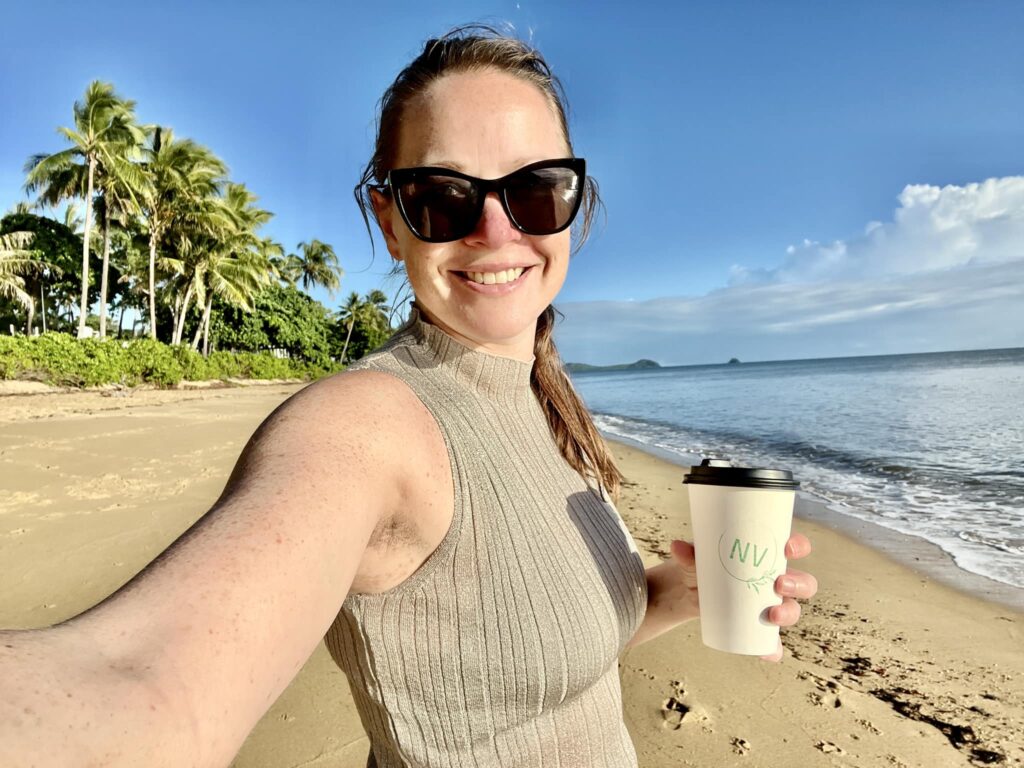
Australia is known for its coffee culture, especially in Southeast Asia, where it exported its love for specialty coffee and cafes. We are also lovers of wine, and have several high quality wine regions near main cities.
How to order your coffee in Australia:
Flat White: An espresso topped with silky microfoam milk. There is less foam in a flat white than in a cappuccino, but more foam than in a latte.
Victoria Bitter (VB): A classic beer with a full-bodied flavor.
Coopers Pale Ale: A well-known craft beer, characterized by its fruity and hoppy taste.
Bundaberg Ginger Beer: A non-alcoholic, fermented ginger beer with a strong and spicy ginger flavor.
Cask Wine: Also known as “goon,” this is an affordable and convenient boxed wine.
Chinotto: An Italian soft drink, made from the bittersweet chinotto fruit.
Murray River Salted Caramel Liqueur: An Australian sipping liqueur made with locally sourced salted caramel, with a sweet and rich flavor.
Important women in Australia’s history
Australia has seen hundreds of influential and inspiring women throughout its history that have contributed to making Australia the country it is today. Here’s a few notable examples:
Edith Cowan (1861–1932): The first woman elected to an Australian parliament, and featured on the AUD $50 note, Cowan contributed to historical social reform, and advocated strongly for women’s and children’s rights.
Vida Goldstein (1869–1949): She played a crucial role in the women’s suffrage movement in Australia and was the first woman to stand for federal parliament.
Rosalie Gascoigne (1917–1999): An influential artist known for her unique use of found and scrap materials, she left her mark on the Australian art scene with her unique style of sculpture and collage.
Margaret Court (1942): One of Australia’s greatest tennis players, she holds a record 24 Grand Slam titles and goes down as an icon in Australian sports history.
Julia Gillard (1961): Australia’s first female Prime Minister, she served from 2010 to 2013, implementing significant reforms in education, health, and social policy.
Australian media and literature
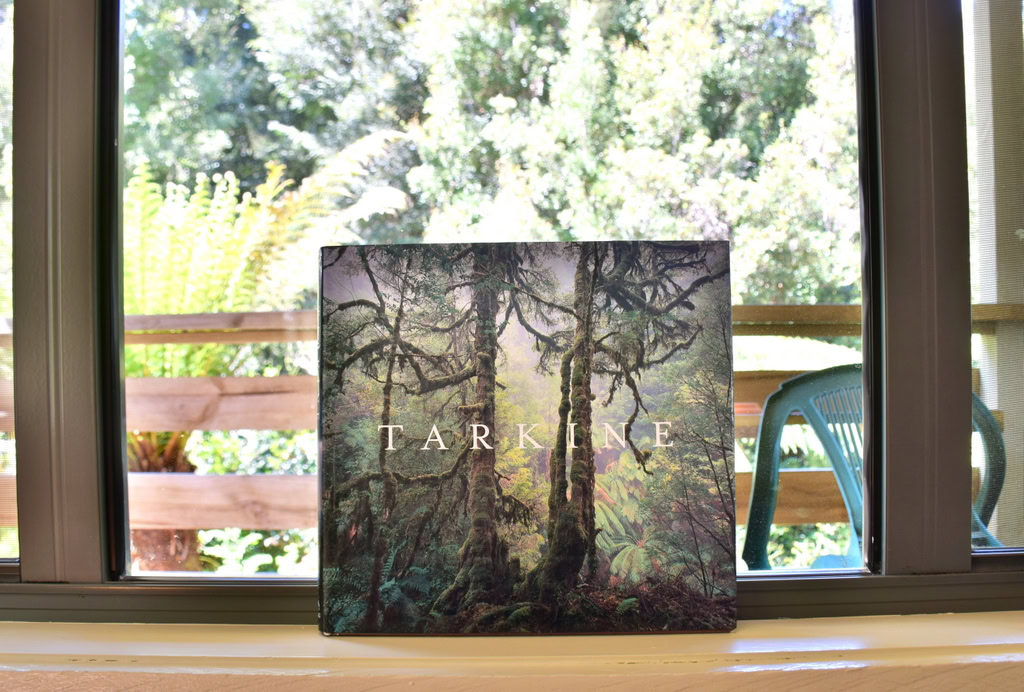
Australia is the perfect backdrop for any good story, and has been featured in many popular books, tv shows and movies.
Books based in or about Australia
Here are a few fiction and non-fiction reads to get you excited about your trip:
- “Cloudstreet” by Tim Winton: A “masterful family saga” that navigates sorrow, joy and grief when the Pickle family inherits a haunted house in Perth and rents it out to the Lamb family, creating an inseparable bond that unfolds over 20 years.
- “The Thorn Birds” by Colleen McCullough: Written in 1977, this romance book dives into topics of love and sacrifice between personal desires and societal expectations set in the epic Australian Outback.
- “Picnic at Hanging Rock” by Joan Lindsay: This novel takes readers on an adventure to discover what is fact and what’s fiction about the disappearance of a group of schoolgirls during a picnic at Hanging Rock.
- “In a Sunburned Country” by Bill Bryson: A travel memoir with “funny and fact-filled” observations about Australian culture and landscapes, making readers feel like they are exploring the country’s locals, weather, and wildlife right along with him.
- “The Dry” by Jane Harper: An edge-of-your-seat crime read about a small town hiding big secrets in rural Australia.
- “A Town Like Alice” by Neville Shute: A romance novel that tells the story of a young woman’s resilience during World War 2 and in post-war Australia.
- “My Brilliant Career” by Miles Franklin: An Australian classic about a young woman named Sybylla and the aftermath of her marriage rejection and struggle for independence in the early 20th century.
- “The Secret River” by Kate Grenville: A historical novel exploring the conflicting emotions of William Thornhill during early days of European settlement in Australia, and the impact colonization had on Indigenous Australians in a fight to call Australia “home”.
Movies or TV shows based in or about Australia
Movies and TV shows are a great way to learn more about the country and immerse yourself in their culture. Here’s a few options you should add to you list:
- “Crocodile Dundee” (1986): Cult-classic comedy featuring an Australian crocodile hunter in New York City. Though this really plays into Australian stereotypes.
- “H2O: Just Add Water” (2006): Iconic children/teen’s TV show about three Australian teenagers who accidentally turn into mermaids, navigating trying to be “normal” teenagers. I went to high school with Cariba Heine who plays Rikki Chadwick.
- “Mad Max” (1979): Groundbreaking post-apocalyptic action film exploring a police officer turned vigilante in a dystopian Australia.
- “The Adventures of Priscilla, Queen of the Desert” (1994): Celebrated musical drama about a group of drag queens traveling across the Australian desert, becoming one of the first examples of LGBTQ+ representations in mainstream media.
- “Rabbit-Proof Fence” (2002): An inspirational historical drama about three Indigenous girls escaping a government labor camp to find their way back home to their mother.
- “Australia” (2008): Epic romantic drama starring Nicole Kidman and Hugh Jackman, set during World War 2 and in the Australian Outback, exploring unlikely love, the realities of colonization and life during World War 2.
- “The Castle” (1997): Beloved comedy about a family’s fight to save the home they built themselves near Melbourne’s busy Tullamarine Airport.
- “Home and Away” (1988): Long-running soap opera set in the fictional coastal town of Summer Bay, now on 37 seasons and counting.
- “Neighbours” (1985): Popular soap opera that has launched the careers of most Aussies in acting, including Kylie & Danni Minogue, Russell Crowe, Margot Robbie, Chris & Liam Hemsworth, Isla Fisher, Naomi Watts, Heath Ledger, Stephen Peacocke, Simon Baker, Natalie Imbruglia, Delta Goodrem, Isabel Lucas, Guy Pearce, Julian McMahon, Adelaide Kane, and many, many more! It’s about the lives of residents in Ramsay Street in a suburb of Melbourne called Erinsborough. With 41 seasons, Aussies never run out of drama watching this one.
- “Wentworth” (2013): Modern drama series set in a women’s prison, exploring survival in a violent and manipulative environment after the main character, Bea, is charged with the attempted murder of her abusive husband.
- “Mystery Road” (2018): Acclaimed crime drama series featuring an Indigenous detective investigating murders in rural Australia, with 3 seasons.
- “The Kettering Incident” (2016): Another mystery and crime drama mini series about a doctor finding herself linked between the disappearances of two girls, 15 years apart.
View our Australia packing list article here:

